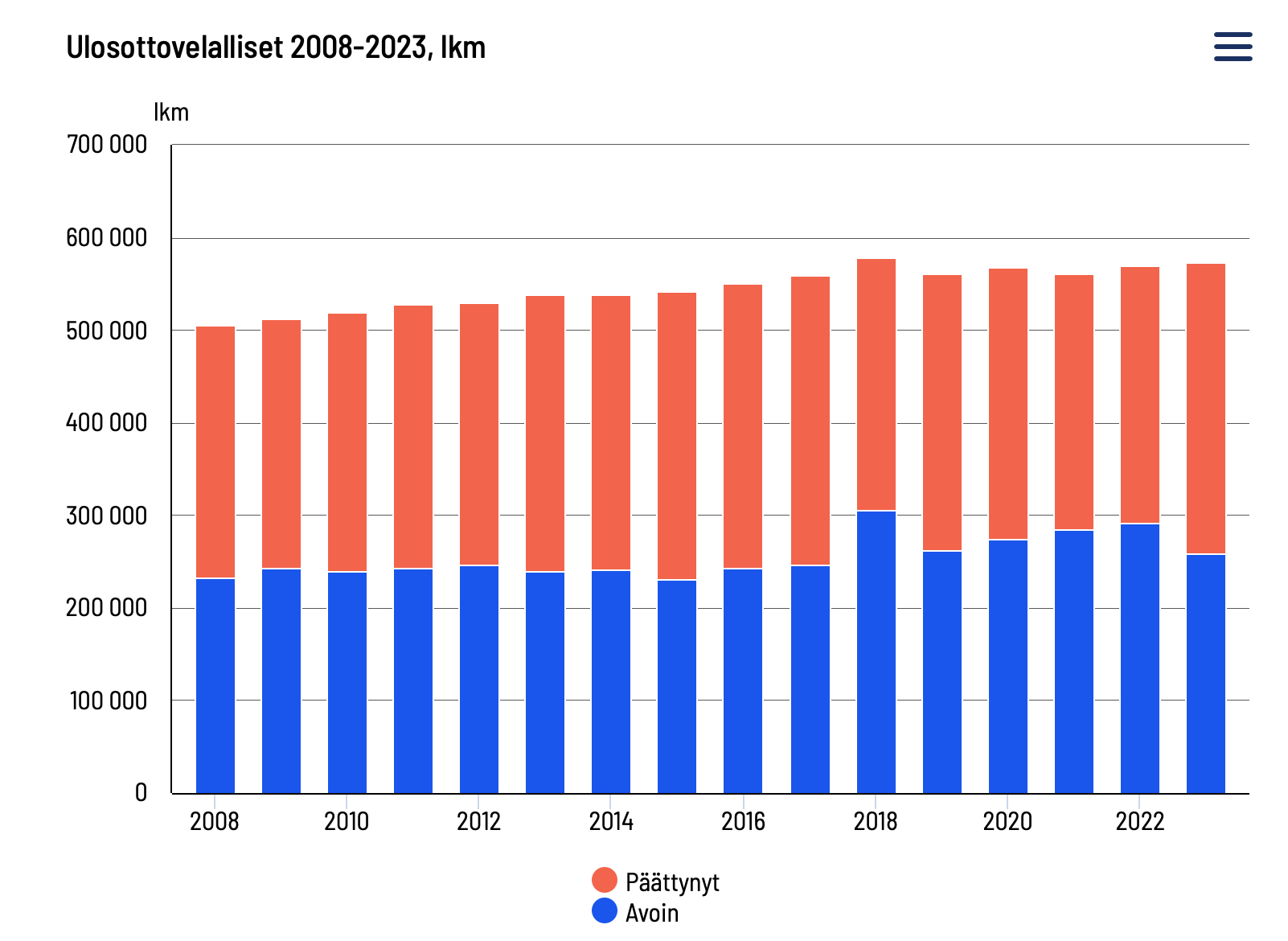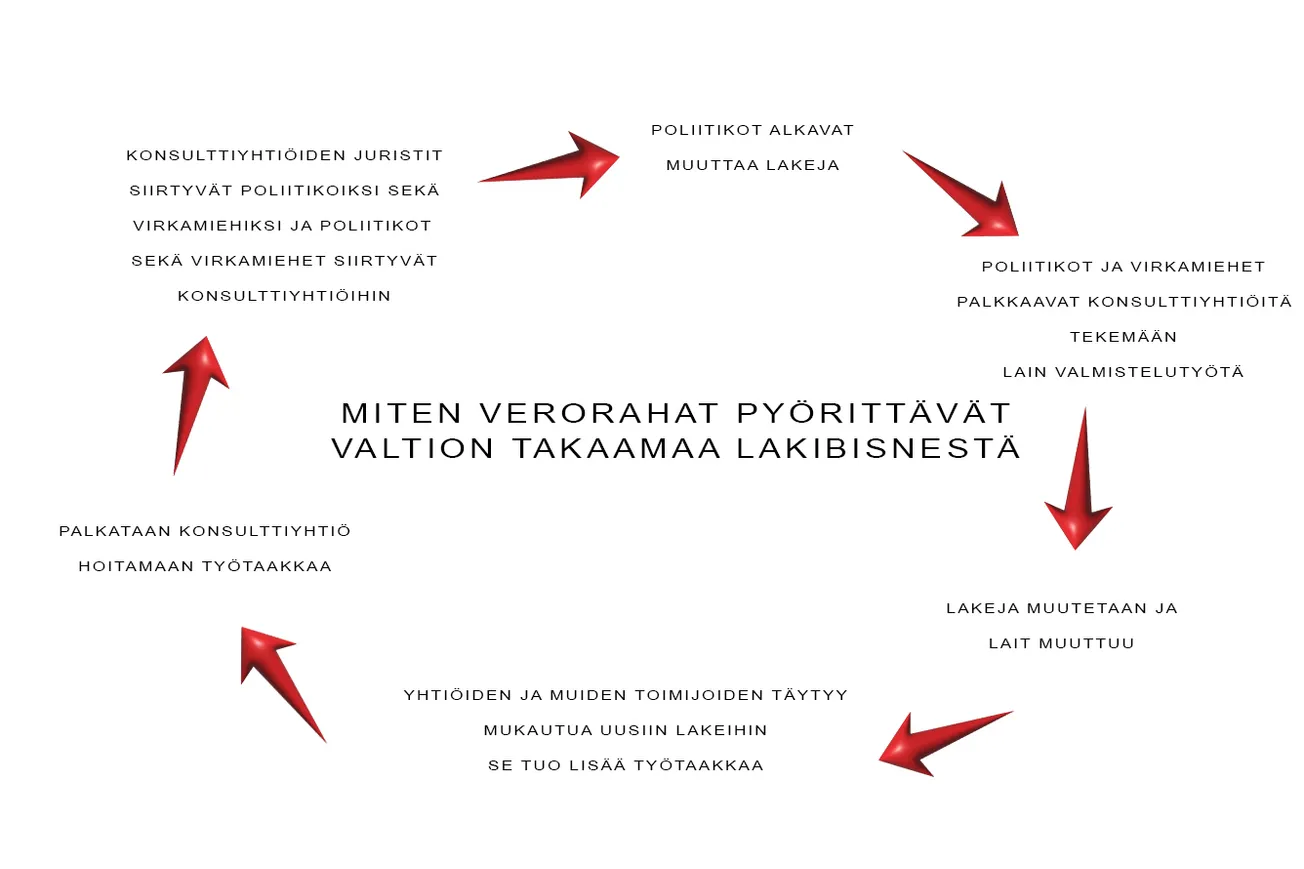Sisällysluettelo
Mitä markkinoidaan perusperiaatteeksi?
Jokaisen ihmisen omaisuuden suoja on turvattu perustuslain tasolla, asiaa käsitellään perusoikeutena. Jokaisella on oikeus käyttää omaisuuttaan haluamallaan tavalla, ja muiden on kunnioitettava toisen omaisuutta. Ketään ei myöskään voida estää tai rajoittaa käyttämästä omaa omaisuuttaan parhaaksi katsomallaan tavalla.
Omaisuuden suoja tarkoittaa laajassa mielessä myös sitä, ettei ketään saa estää käyttämästä omistamaansa tai hallitsemaansa omaisuutta normaalilla tavalla. Omaisuuden omistus- ja vallintarajoituksista täytyy lailla säätää. Laki sisältää muun muassa määräykset tilanteesta, jossa omaisuutta täytyy pakkolunastaa yleiseen tarpeeseen täyttä korvausta vastaan.
No miten asiat käytännössä toimivat?
Suomessa nimitetään väkivaltamonopolin yhteistä käyttöönottoa viranomaisyhteistyöksi. Useille viranomaisille on annettu niin sanotut laajat tiedonsaantioikeudet ja jos jokin tieto ei ulota tiettyä viranomaista, voidaan käyttää toista viranomaista sen saamiseksi, kuten poliisia. Lisäksi on myös virka-apupyynnöt, millä voidaan pyytää toisen valtion viranomaisilta tietoja.
Esimerkiksi Verohallinto voi tutkia tiettyä asiaa ja tulla siihen tulokseen, että veroja on jätetty maksamatta. On varsin tavanomaista, että asiasta esitetään arvio ja tehdään poliisille tutkintapyyntö, joka voi ottaa kiinni epäillyn ja toimia todennäköisten syiden perusteella. Arvion paikkansapitävyyden suhteen ei viranomaisella ole kuitenkaan merkittävää oikeudellista riskiä.
Tämä kaikki on sinällään vielä monessa valtiossa samalla tavalla tapahtuvaa tutkintaa, on kyseessä rikosepäily tai ei.
Subjektiivisuus viranhaltijoiden kommenteissa on yleistä. Esimerkiksi epäillyn kesämökkien määrää voidaan pitää epäuskottavana, koska voidaan vain sanoa, että syytetyllä on jo toinen tai useampi loma-asuntoja. Voidaan myös pitää jotain tiettyä rahamäärää suurena tai pienenä, pohjautuen viranhaltijan omaan subjektiiviseen kokemukseen asian suhteen. Viranomaistoimintaa Suomessa ohjaa hyvin voimakkaasti, lähes täysin, subjektiiviset käsitykset.
Takavarikointi ja ulosoton toiminta
Aletaan päästä lähemmä sitä tilannetta, miksi todellisuudessa Suomessa ei ole omaisuuden suojaa. Ulosotto voi päätöksellään takavarikoida tai ulosmitata henkilön omaisuutta velkojen kattamiseksi. Tämä on myös ihan normaalia velallisen sekä velkojen oikeuksista huolehtimista.
Ulosottoasiat koskevat lähes 600000 (573798) Suomalaista vuosittain. 11,6% Suomalaisesta yli 18 vuotiaasta Suomenkielisestä väestöstä on Ulosottoviraston toimien kohteena joka vuosi.

11,6% Suomalaisesta yli 18 vuotiaasta Suomenkielisestä väestöstä on Ulosottoviraston toimien kohteena joka vuosi.
Keinotekoinen järjestely sekä samaistaminen
Ulosotossa noudatetaan periaatetta, jonka mukaan sivulliselle kuuluvaa omaisuutta ei saa ulosmitata velallisen veloista. Ulosottomies voi kuitenkin tietyissä tapauksissa poiketa sivullisen nimissä olevan omaisuuden ulosmittaamiskiellosta. Silloin kun velallinen on pyrkinyt käyttämään väärin sivullisen omaisuuden ulosmittauskieltoa ja on tehnyt sivullisen kanssa järjestelyjä, joilla omaisuutta on saatettu sivullisen nimiin ulosoton välttämiseksi tai omaisuuden pitämiseksi velkojien ulottumattomissa, voidaan sivullisenkin nimissä olevaa omaisuutta ulosmitata velallisen veloista. Tätä nimitetään lainsäädännössä keinotekoiseksi järjestelyksi; todellisuudessa velallisen valta omaisuuteen ei ole päättynyt, vaikka se onkin jollakin oikealla oikeustoimella siirretty sivullisen nimiin.
Ulosottoviranomainen voi siis niin harkitessaan päättää, että jokin omaisuuserä ei olekaan toisen oikeushenkilön tai luonnollisen henkilön omaisuutta. Keinotekoiseksi järjestelyksi katsominen sekä samaistaminen koetaan monesti täysin subjektiiviseksi harkinnaksi. Usea Suomalainen asianajaja nimittää keinotekoisen järjestelyn prosessin pelkäksi mielivallaksi. Virallisesti tämä toki nimetään esimerkiksi harkinnaksi.
Usea Suomalainen asianajaja nimittää keinotekoisen järjestelyn prosessin pelkäksi mielivallaksi.
Ulosottomies voi toimia näin, jos omaisuuden nimellinen omistaja ei pysty esittämään Ulosottomiehen kulloinkin hyväksymää näyttöä tueksi väitteelleen. Ulosottomies ei ota kantaa tehtyjen järjestelyjen lainmukaiseen tai muodolliseen virheettömyyteen, vaan tärkeintä sivuuttamisessa on se, että juridisesti oikea muoto ei vastaa ulosoton mielestä todellisuudessa vallitsevaa asiaintilaa.
Arvojen määritys
Ulosottolaitos on erityisen tunnettu alihintaan myymisestä. Ei ole ollenkaan tavatonta että esimerkiksi ajoneuvoja, kiinteistöjä tai huoneistoja arvioidaan jopa 40% arvosta, tähän on tulkittavissa syyksi; jotta saadaan kerättyä enemmän omaisuutta takavarikkoon tai ulosmitattua enemmän. Tähän on kerätyn aineiston pohjalta lähes poikkeuksetta annettu vastaukseksi, ettei Ulosottoviranomainen ole ammattilainen arvonmäärityksessä. Mutta siitä huolimatta Ulosottoviranomainen kuitenkin tekee ja toimittaa arvonmäärityksen itsenäisesti.
Väärien arvojen vaikutus
Väärän arvonmäärityksen vaikutus on hyvin ilmeinen. Ulosottotoimien kohteena oleva henkilö joutuu olemaan ulosoton toimien alla, vaikka reealiarvo onkin suurempi kuin ulosmittaukseen oikeuttava summa. Tämä on hyvin yleistä ja on kerätyn aineiston pohjalta usein esiintyvä tapahtuma.
Mitä sitten todetaan keinotekoiseksi järjestelyksi ja samaistetaan?
Esimerkiksi vaimosi nimissä oleva auto, voidaan päättää että sen käyttämisen etu on sinun ja se ulosmitataan.
Esimerkiksi yrityksesi osakehuoneisto, voidaan päättää että se ei ole yrityksen vaan sinun käytössä.
Esimerkiksi yhdessä omistettu omakotitalo, voidaan päättää että se on kokonaan sinun.
Esimerkiksi yrityksen nimissä oleva kesämökki tai huoneisto, voidaan päättää että olet vuokrannut sitä liian vähän ja se on sinun omaisuuttasi.
Esimerkiksi yrityksen autoliikkeelle maksama tehdastilattu auto, jota ei ole edes valmistettu. Voidaan päättää että se on sinun etuasi ja maksettu summa ulosmitataan.
Esimerkiksi teollisuushalli, joka on ollut tyhjillään. Voidaan päättää että se on ollut sinun käytössäsi koska sitä ei ole vuokrattu.
Esimerkiksi ulkomaisen yhtiön omaisuus, voidaan päättää että se on sinun omaisuuttasi ja mikäli sitä on Suomen alueella, se ulosmitataan.
Esimerkkejä on lukuisia.
Loppusanat
Omaisuus voidaan ottaa valtion haltuun erinäisin menettelyin. Kysymys on luonnollisesti rajanvedoista, vaikkapa hallituksen esitys vuodelta 1998 on tarkasti käsitellyt asiaa ennen varsinaista lakimuutosta. Lakikokonaisuus sinällään tähtää velkojan oikeuksien suojaamiseen, mutta tähän on tottakai muitakin keinoja.
Todellisuus on kuitenkin se, että Suomessa ei ole viime kädessä sellaista omaisuuden suojaa, mikä nimenomaisesti mielletään omistamisen tuomaksi arvoksi.
Monissa valtioissa on velkojan riskiä luotonannossa kasvatettu ja vaadittu siitä huolellisempaa ja vakuusperusteista. Oikeustoimien merkitys pitkälti katoaa, kun ne voidaan yhden kihlakunnan voudin subjektiivisen mielipiteen myötä tehdä voimattomiksi.
Käännämme tämän tekstin englanniksi, jotta Suomeen sijoittavat tai muuttavat voisivat selkeämmin arvioida riskejä, mitä Suomen kaltaisessa valtiossa todellisuudessa on.
ENGLISH SUMMARY
In practice, there is no property protection in Finland
The Finnish state paints a picture of itself as a defender of fundamental rights and a fair country. One of the reasons for emigrating is to assess whether Finland has the right sense of justice.
What is marketed as the basic principle?
The protection of every person's property is enshrined in the Constitution, it is treated as a fundamental right. Everyone has the right to use their property as they wish, and others must respect the property of others. Nor can anyone be prevented or restricted from using their own property in the way they see fit.
In a broad sense, the protection of property also means that no one may be prevented from using the property they own or control in the normal way. Restrictions on the ownership and possession of property must be laid down by law. The law includes, inter alia, provisions on the situation in which property must be expropriated for public use against full compensation.
So how do things work in practice?
In Finland, the joint introduction of a monopoly on the use of force is called cooperation between authorities. Several authorities have been given what are known as broad information rights and if a piece of information does not reach a particular authority, another authority can be used to obtain it, such as the police. There are also requests for assistance, which can be used to request information from authorities in another country.
For example, the Tax Administration may investigate a particular matter and come to the conclusion that taxes have not been paid. It is quite common for an assessment to be made and for a request for investigation to be made to the police, who may apprehend the suspect and act on the basis of probable cause. However, there is no significant legal risk to the authority as to the accuracy of the assessment.
All this is still in itself an investigation in the same way in many countries, whether or not there is a suspicion of a criminal offence.
Subjectivity in the comments of officials is common. For example, the number of holiday homes owned by a suspect may be considered unreliable, because it can only be said that the accused already owns another or more holiday homes. It is also possible to consider a certain amount of money to be large or small, based on the officer's own subjective experience of the matter. The work of the authorities in Finland is very strongly, almost entirely, guided by subjective perceptions.
Seizure and enforcement
We are beginning to get closer to the real reason why there is no protection of property in Finland. An enforcement agency may, by decision, seize or attach a person's property to cover debts. This is also a normal way of looking after the rights of the debtor and the debts.
Almost 600,000 (573798) Finns are involved in debt enforcement cases every year. 11.6% of the Finnish-speaking population over 18 years of age are subject to the actions of the ULO every year.
11.6% of the Finnish-speaking population aged over 18 in Finland are subject to the actions of the ULO every year.
Artificial arrangement and identification
The principle of non-possession of property belonging to a third party in respect of the debtor's debts is applied. However, the bailiff may, in certain cases, derogate from the prohibition on seizing property in the name of a third party. Where the debtor has sought to abuse the prohibition on attachment of a third party's assets and has made arrangements with the third party to place assets in the third party's name in order to avoid attachment or to keep the assets out of the reach of creditors, assets in the third party's name may also be attached against the debtor's debts. This is what the law calls an artificial arrangement; in reality, the debtor's possession of the property has not ceased, even though it has been transferred to the third party by a legal act.
The enforcement authority may therefore decide, at its discretion, that an asset is not the property of another legal or natural person. To consider it as an artificial arrangement and to identify it as such is often perceived as a purely subjective judgement. Several Finnish lawyers refer to the process of artificial arrangement as mere arbitrariness. Officially, of course, this is called, for example, discretion.
Many Finnish lawyers refer to the process of artificial arrangement as mere arbitrariness.
The bailiff may do so if the nominal owner of the property is unable to produce evidence, accepted by the bailiff at the time, to support his claim. The administrator does not take a position on the legal or formal correctness of the arrangements made, but the main point to be disregarded is that the legally correct form does not correspond, in the administrator's view, to the actual state of affairs.
Determination of values
Enforcement agencies are particularly notorious for selling below cost. It is not uncommon for vehicles, real estate or apartments, for example, to be valued at up to 40% of their value, for the following reasons: to collect more property for seizure or to seize more. On the basis of the data collected, the answer to this is almost invariably that the Enforcement Agency is not a professional in the field of valuation. Nevertheless, the Enforcement Agency does carry out and carry out the valuation independently.
The impact of false valuations
The impact of a false valuation is very obvious. The person subject to enforcement action will be subject to enforcement action even if the real value is higher than the amount to be attached. This is very common and, on the basis of the data collected, is a frequent occurrence.
What is then considered as an artificial arrangement and identified as such?
For example, a car in your wife's name, it may be decided that you have an interest in using it and it is repossessed.
For example, a condominium in your company, it may be decided that it is not for the company's use but for yours.
For example, a jointly owned detached house, it can be decided that it is all yours.
For example, a summer cottage or apartment in your company's name, it may be decided that you have under-let it and it is your property.
For example, a factory-ordered car paid for by the company to a car dealership that hasn't even been manufactured. It may be decided that it is your asset and the amount paid is seized.
For example, an industrial warehouse that has been empty. It may be decided that it has been used by you because it has not been rented.
For example, the property of a foreign company, it can be decided that it is your property and if it is on Finnish territory, it will be seized.
There are numerous examples.
Final words
Property can be taken over by the state in various ways. The question is of course one of delimitation, for example the 1998 government bill has dealt with the issue in detail before the actual change in the law. The law as such aims to protect the rights of creditors, but there are of course other ways of doing this.
The reality is, however, that in Finland there is ultimately no protection of property that is explicitly understood to be the value of ownership.
Many countries have increased the creditor's risk in lending and required it to be more careful and collateral-based. The value of legal actions largely disappears when they can be rendered powerless by the subjective opinion of a single civil servant.
We translate this text into English so that those investing or moving to Finland can more clearly assess the risks that a country like Finland actually poses.
Lähteet:

https://www.finlex.fi/fi/hallituksen-esitykset/1998/275
Henkilöhaastattelut








